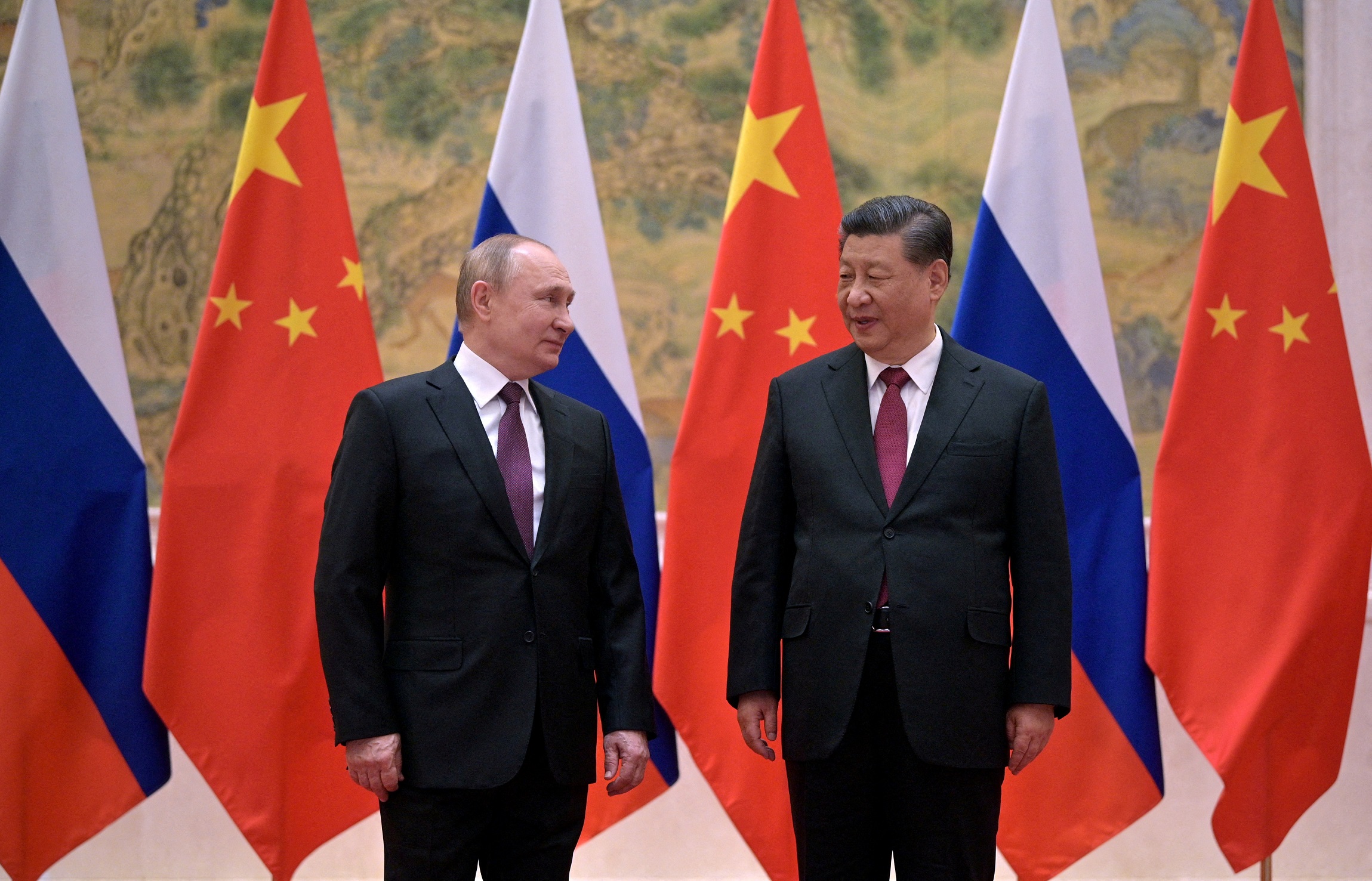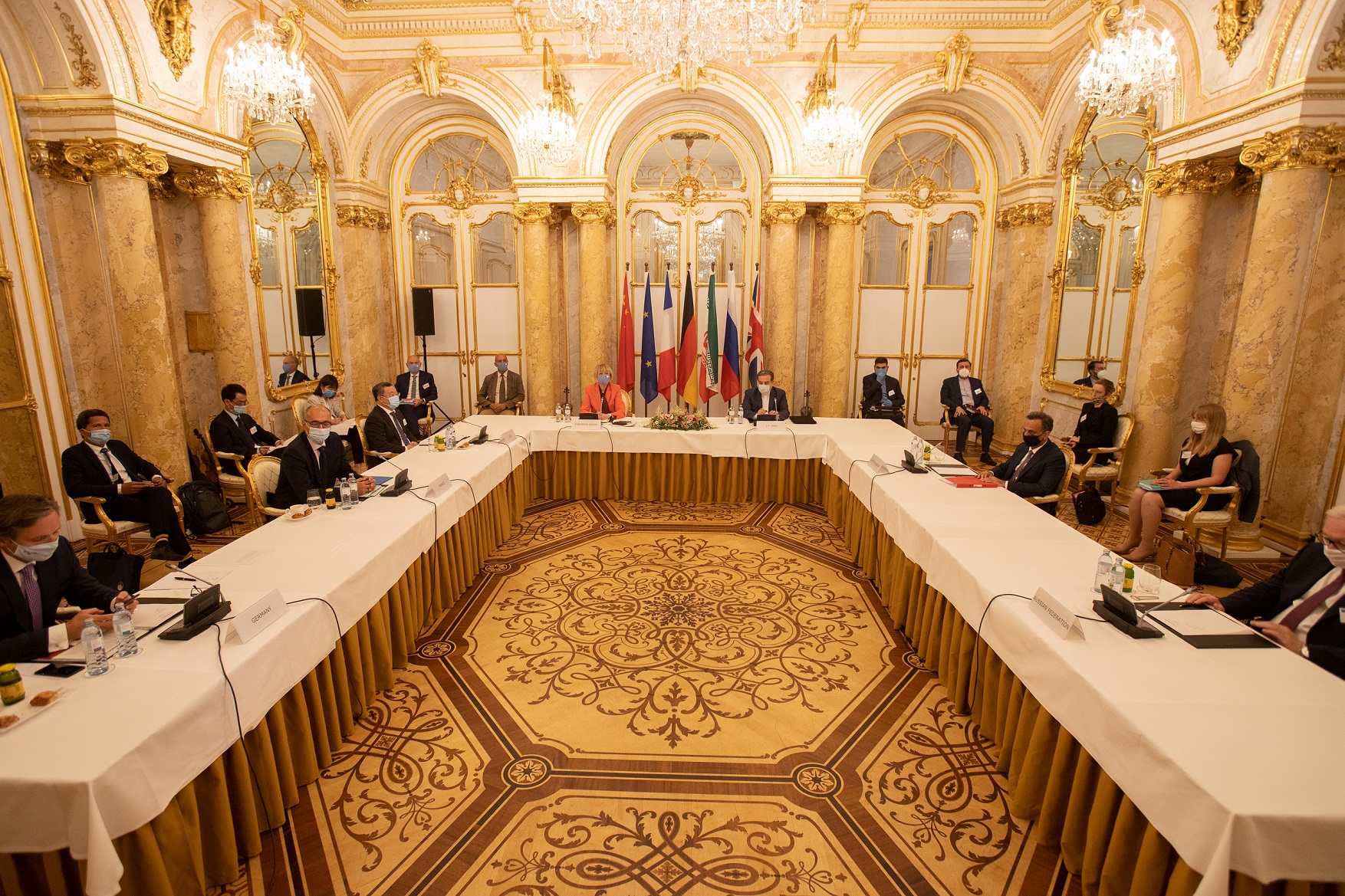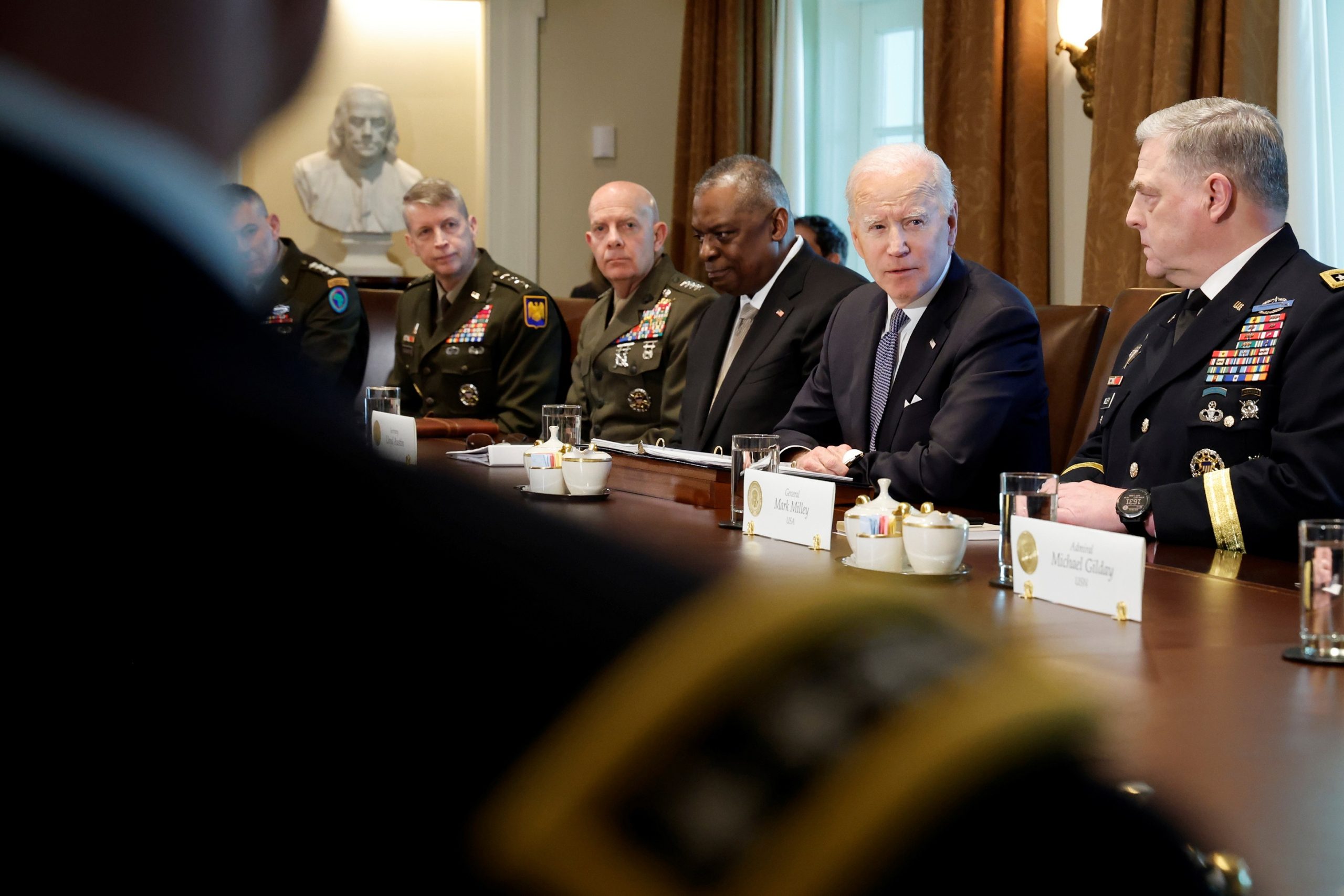Publications
Special Publication, December 7, 2022
Following the national security strategy of the Trump administration, the Biden administration places even greater emphasis on the challenge posed by China. It describes this challenge as a competition between democracies and autocracies over shaping the global order, even as it decreases the emphasis on the challenge posed by Russia. The administration identifies the coming decade as critical in shaping the century, in relation to both the struggle against climate change and the US contest with China. The strategy seeks to base a victory over China on strengthening sources of domestic power and resilience, especially while maintaining the technological edge and expanding manufacturing capabilities, and on solidifying the network of US capabilities and alliances with democratic countries into “integrative deterrence” of rivals. The administration continues to seek to reduce its footprint in the Middle East, which means that there is greater likelihood of an expanded Chinese footprint in the region, and of increasing tension between Washington and its partners regarding the Chinese issue. The administration’s policy can be a basis for technological and other collaboration with Israel, but also for increased tension between the US and Israel over relations with China.
In October 2022 the United States administration published the unclassified versions of two key documents that lay out its approach to current US national security challenges – the National Security Strategy (NSS), published by the White House, and the National Defense Strategy, published by the Department of Defense (DoD). The classified versions were sent to Congress in March 2022, alongside the proposed 2023 defense budget, but the war in Ukraine led the administration to revise them and delayed the publication of the unclassified versions until October. The DoD also published two additional central documents – the Nuclear Posture Review, and the Missile Defense Review.
The US strategy is based on the understanding that “the world is now at an inflection point. This decade will be decisive” for strategic developments that will shape global reality over the next century, particularly the rise of China and the response to the climate crisis” (NSS, p. 12). The underlying assumption is that the key to success in the competition with China lies in scientific and technological innovation and the maximization of opportunities of the fourth industrial revolution (the technological leap that relies on big data analysis, artificial intelligence, and machine learning).
The documents themselves reflect substantial continuity between the approaches of the Biden and Trump administrations: the Trump administration had already focused on the great power competition, while positioning China as the central strategic and security challenge to the US and reducing both the focus on other challenges and the investments in them (particularly in the Middle East). It also emphasized the importance of bringing allies and partners on board for facing regional challenges with a substantial focus on the technological aspect of competition – primarily with China. The continuity between the administrations is especially noteworthy given the changes in recent years in the global strategic environment, especially the risk of military escalation between the powers (in the contexts of Taiwan and Ukraine), the COVID-19 pandemic, and the increased salience of the private sector in all dimensions of combat (particularly in communications, logistics, and cyber). In many of its components this strategy also resembles the strategy published by the Obama administration in 2010, which emphasized the domestic recovery of the US after the 2008 economic crisis and strengthening alliances and diplomacy, albeit without the element of global competition.

More broadly, the Biden administration emphasizes the competition of ideas, and casts the US as the leader of the struggle between democracies and autocracies that seek to change the rules of international conduct, particularly China. Strengthened democracies, human rights, and justice and equality are principles incorporated throughout the strategy documents, alongside an emphasis on negating the ability of non-democratic regimes to exploit technological developments to strengthen their hold over the public (particularly through cyber surveillance and oversight, public sphere surveillance, and local internet control).
The 2022 National Security Strategy describes several central challenges that the US must face:
- China as the United States’ most fundamental challenge, due to its position as a rival in shaping the global order, with the willingness and capability to do so economically, politically, militarily, and technologically. China is described as a “pacing challenge”; the US defense establishment must prepare for this challenge and build its force accordingly.
- The threat from Russia has decreased since 2017 and is no longer listed alongside China as a top priority, but is defined as an urgent and "acute threat" to be faced and contained and constrained.
- Global challenges, first and foremost global warming and pandemics, are discussed extensively and bear greater weight.
- “Investing in [the] national power to maintain a competitive edge,” including in manufacturing capabilities, technology, and defense of the supply chain as core elements of the competition.
- Strengthening democracy in the US and among allies who share its values and whom the administration views as important sources of power in the strategic competition and a basis for strategic connections.
The National Defense Strategy uses a number of new concepts (that are not fully spelled out):
- Integrated deterrence: a theoretical foundation for connecting all sources of US strength, led by diplomacy, into “seamless” activity across all domains and theaters, in cooperation with allies and partners, while based on an experienced military and nuclear deterrence. Integrated deterrence will be achieved by the integration of various emphases: preventing achievements of the rival, raising the cost of belligerent activity, reducing the benefit of belligerence for US rivals, and strengthening the resilience of threatened bodies and systems.
- Campaigning: a concept postulating that a variety of tools below the threshold of military force should be used and integrated in strategy, alongside the use of force, for coping with rivals themselves operating in the gray zone. The aims are to maintain and strengthen US military advantages, reduce the rival’s ability to make use of severe enforcement tools, and harm the rival’s ability toward force buildup and application. This will be accomplished by synchronizing DoD capabilities and efforts to improve the conditions in the space for the benefit of the US.
- Building enduring advantages in order to maintain the continuing US enduring qualitative (and quantitative) technological edge vis-à-vis its various rivals, via acceleration of force buildup and development and incorporation of new technologies and tools.
- Resilience: The national security documents place a particular emphasis on developing and strengthening the resilience of the US in facing all future challenges. Resilience should be expressed in the public domain (in the struggle between democracies and dictatorships), the economic domain (local manufacturing and supply chains), and the realm of cyber challenges; in military systems in the face of disruptions by enemies who use various methods and advanced technologies to prevent and negate access to the area (Anti-Access/Area denial); and in the face of the consequences of climate change and pandemics for infrastructure and people. The US will also seek to strengthen the resilience of its allies and partners to prevent against belligerence by their enemies.

In addition, the documents emphasize the importance of nuclear deterrence as a basis for the credibility of overall US deterrence around the world and the importance of modernizing the US nuclear arsenal. In this context, the administration sees the existing nuclear arms control regimes (and the development of new control mechanisms) as vital, while reiterating the US commitment to prevent Iran from achieving nuclear weapons, and its expectation that North Korea will disarm itself of military nuclear technology.
There is clearly a significant decline in the importance of the Middle East in the administration’s priorities. The region is still viewed as a central source of terrorism, but to a lesser extent than in the past. The response to this challenge, as the US sees it, will be led by its partners in the region, with limited American assistance.
The administration underscores that it intends to conduct dialogue with regional states on their terms (hinting at Iran and perhaps also Saudi Arabia). It presents five components of its policy: strengthening partnerships with countries that support the current global order; preventing regional or world players from gaining the capabilities to disrupt free maritime movement in the region (including the Hormuz and Bab-el-Mandeb Straits) or to conquer territories in the region by threats, force buildup, and use of force; pursue de-escalation the region primarily via diplomacy when possible; promoting integration of the countries of the region via aerial and maritime defense partnerships; and promoting human rights.
Israel is mentioned as a partner in the joint forum of Israel, the US, India, and the United Arab Emirates (I2U2) and an actor that should be integrated into the region, and in the context of the importance of a two-state solution to the Israeli-Palestinian conflict. Iran is mentioned as an actor pursuing a belligerent policy toward its neighbors (similar to Russia and North Korea); the US will act against it, while assisting regional states in developing their capability to contend with Iran. In the nuclear context, the administration avows, “We will pursue diplomacy to ensure that Iran can never acquire a nuclear weapon, while remaining postured and prepared to use other means should diplomacy fail” (NSS, p. 42).
The reduction of the status of the Middle East among American priorities – down to fourth place after the Indo-Pacific, Europe, and the Western Hemisphere – reflects the decline of American interests in this region and ongoing fatigue from it. This will influence the image and status of the US and may lead to further decline of its influence in the region. It is already possible to observe the expanded influence of other actors with fundamental local interests, chiefly China and Russia.

From Israel’s point of view:
- China is the strategic focus of the United States and will continue to dictate large parts of the administration’s strategy, including vis-à-vis Israel. The US will continue to pressure Israel to demonstrate its attentiveness and define policies that take American interests into account, including in the contexts of technology oversight and national infrastructure. Accordingly, Israel is likely to have reduced freedom of action regarding issues that are at the heart of the competition and friction between the two superpowers.
- At the same time, the administration’s strategy constitutes an opportunity to strengthen ties and assets in the contexts of technology and innovation, building national resilience in infrastructure, home front defense, cyber, addressing climate change, developing and integrating weapons, and actions in the “gray zone” (below the threshold of war). Israel can have a significant positive role in helping the US fulfil its vision for regional architecture that can give an answer to a variety of security issues (Iran, terrorism, instability), including in the context of coping with climate change.
- At this stage, competition with China has not led the US to reexamine its approach of reducing investments in the Middle East or to develop a specific strategy for competition with China in the region. It continues to pursue the integration of a regional security architecture that can cope with issues in the region with American assistance from behind. It is likely that in this reality the status of the US in the region will continue to decline, as reflected by defiant acts toward it by senior US partners (such as Saudi Arabia and Turkey). Such a decline is likely to harm the overall deterrence posture of Israel and its regional status, which in part relies on the image of its special relationship with the US.
- In the absence of a comprehensive American response to China in the Middle East, and in light of the increasing interests of Beijing in the region, China will likely continue to expand its footprint in the region economically, militarily, diplomatically, and in security, on both sides of the Iranian-Saudi divide.
- The Biden administration’s strategy emphasizes safeguarding human rights and opposing expansive state surveillance tools. The administration even defines the competition it is waging as a one between democracies and autocracies, rather than just between China and the United States. Thus the dimension of human rights in the Palestinian context is likely to be another point of friction between the US and Israel, particularly given the change of government in Israel.



